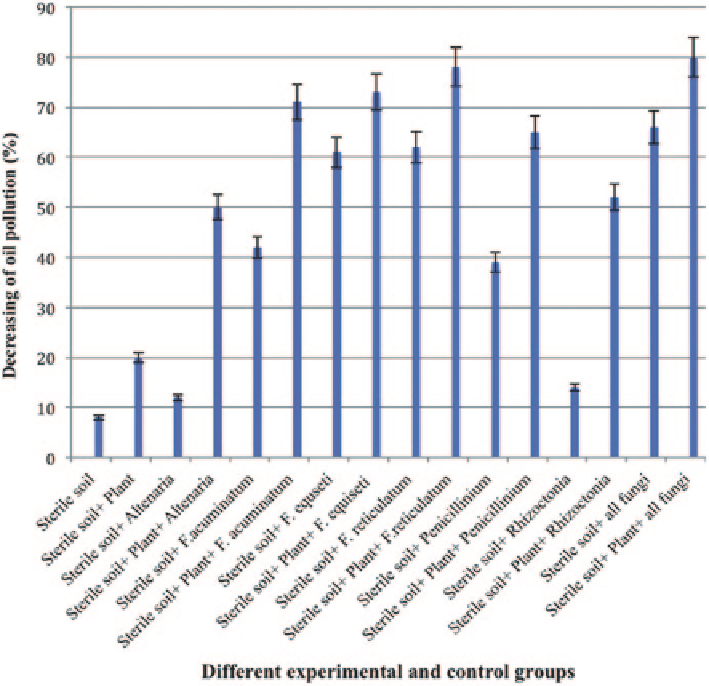Environmental Engineering Reference
In-Depth Information
Fig. 12.1
Decrease of crude oil concentration (%) in the polluted soils after bioremediation by
Senecio glaucus
and its root-associated fungal strains
.
All pots were subjected to 5 % w/w petro-
leum pollution at the beginning of experiment. Data indicated that amounts of petroleum pollution
decreased due to bioremediation. Decrease in petroleum in control pots is the result of evaporation.
Decrease of pollution in the experimental pots is significantly different from the control (
P
≤ 0.01).
Each data represent the means ± SE of five samples
in the soil of experimental pots and compared with control ones. The data showed
that the concentration of petroleum pollution decreased considerably in the all ex-
perimental pots except in the control one (Fig.
12.1
). The data showed that decrease
in the experimental pots containing plant together with all fungal strains was more
than other groups (up to 80 %). Meanwhile, the decrease of crude oil pollution was
also considerable in the pots containing plant with
Fusarium equiseti
and
F. r e -
ticulatum
added (up to 74 % and 78 %). The data showed all fungal species were
capable of decreasing petroleum pollution (Fig.
12.1
), but they were more effective
when applied as associates with the plant.
Altenaria
sp.
cause decrease up to 14 %
but when applied with plant, pollution was decreased up to 50 % and also
Rhizocto-
nia
reduced soil pollution up to 14 % solely and when applied with plant, decrease
went up to 52 %.

